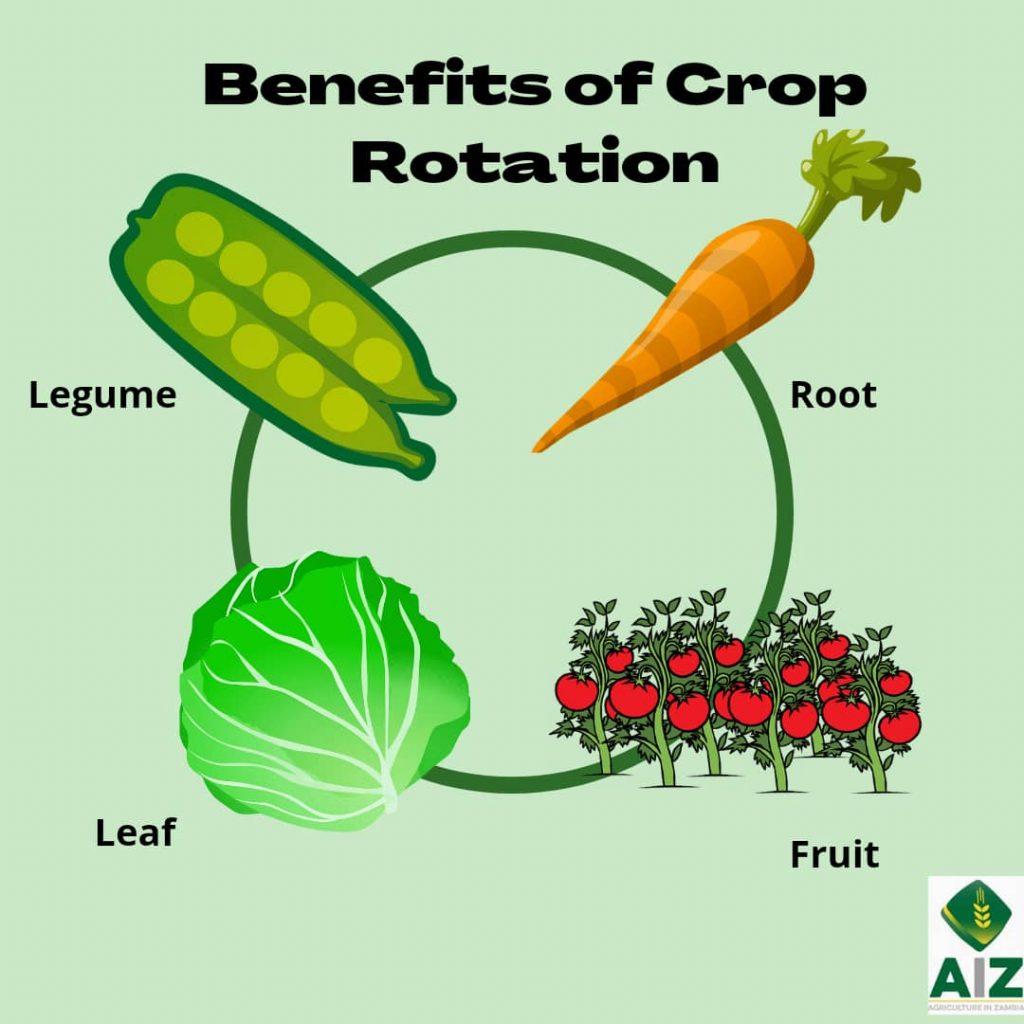Crop rotation is the practice of growing different crops throughout the year, or from one year to the next, in order to improve soil fertility, control pests, and a variety of other benefits. Most small-scale Zambian farmers are seasonal farmers, therefore, do not practice crop rotation. They use pesticides, fertilizers, and herbicides.
What you need to know about crop rotation in Zambia
If you grow the same crop in the same field, every season, soil fertility depletes because all the nutrients that the same crop species requires to grow every year are used up. This practice is called monoculture or monocropping. This practice often leads to an increase in weeds and pests. The more you use pesticides and herbicides, the more resistant the pests become, and often survive repeated applications. This kind of farming also depletes specific nutrient requirements and damages the soil. It pushes the ecosystems out of balance by reducing soil organisms. To use monoculture, you have to artificially replenish nutrients using fertiliser, if you want to achieve maximum yield. This is usually a costly exercise.
With crop rotation, different crops are planted over periods of time, usually lasting upto one year for each crop. The new crops often require different nutrients to grow and, during their growth, they release nutrients that other crops need. The land can also be left bare for a year to allow nutrients to replenish. This creates a cycle we call Crop Rotation. You can use crop rotation in both organic and conventional farming systems.
Benefits of crop rotation
- Better nitrogen management
- Reduces reliance on chemicals
- Increases crop yields
- Prevents soil erosion
- Mitigates climate change
- Encourages the production of green manure cover crops
- Limits the concentration of pests, weeds and diseases
- Reduces land and water pollution
- Improves soil structure and fertility by alternating deep-rooted and shallow-rooted plants
You might also like: Frequently asked questions about growing soya beans
How crop rotation works

The classification of each crop is the main factor to consider when developing a plan for crop rotation. The main groups include legume, root, fruit, and leaf. Below is an example of the most commonly used crop rotation cycles:
- Legumes are plants which have their fruits/seeds eaten, such as beans. These are planted first because they release nitrogen, which leaf plants need in large amounts to grow.
- Leaf plants are plants which have their leaves eaten, such as cabbages or rape. These require more of the nitrogen released by legumes and are therefore planted next.
- Fruits follow because too much nitrogen stops them from setting fruits. Since the leaf plants use most of the nitrogen, the condition is perfect for them. They also use the phosphorus produced by leaf plants and produce potassium.
- Root plants are plants which we eat the roots of, such as carrots or potatoes. They require much less nitrogen but need the potassium produced by the fruits, so they are planted in the next cycle. Legumes would then be planted to put nitrogen back in the soil and the cycle continues.
Important tips for your planning process
- Know which family your crops belong to so that you don’t plant the same type of crops concurrently.
- Keep records
- Acquire skills and knowledge regarding each type of crop you grow
- Know the costs, profits and yield for each crop you plant
- Your plans should be based on long-term benefits and returns
- Use manure instead of fertiliser
**Your soil may still need to be tested and replenished even if you pratice soil rotation.
References
https://pubmed.ncbi.nlm.nih.gov/20014586/
https://cdnsciencepub.com/doi/pdf/10.4141/S04-078

NEED SUCH INFORMATION ABOUT CROP ROTATION, THIS IS VERY IMPORTANT
[…] You might also like: What is crop rotation and why it’s important […]